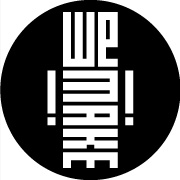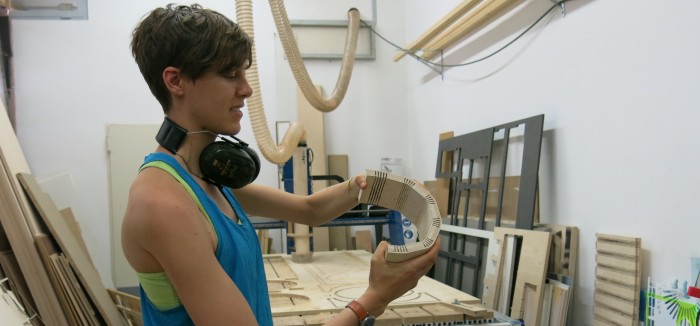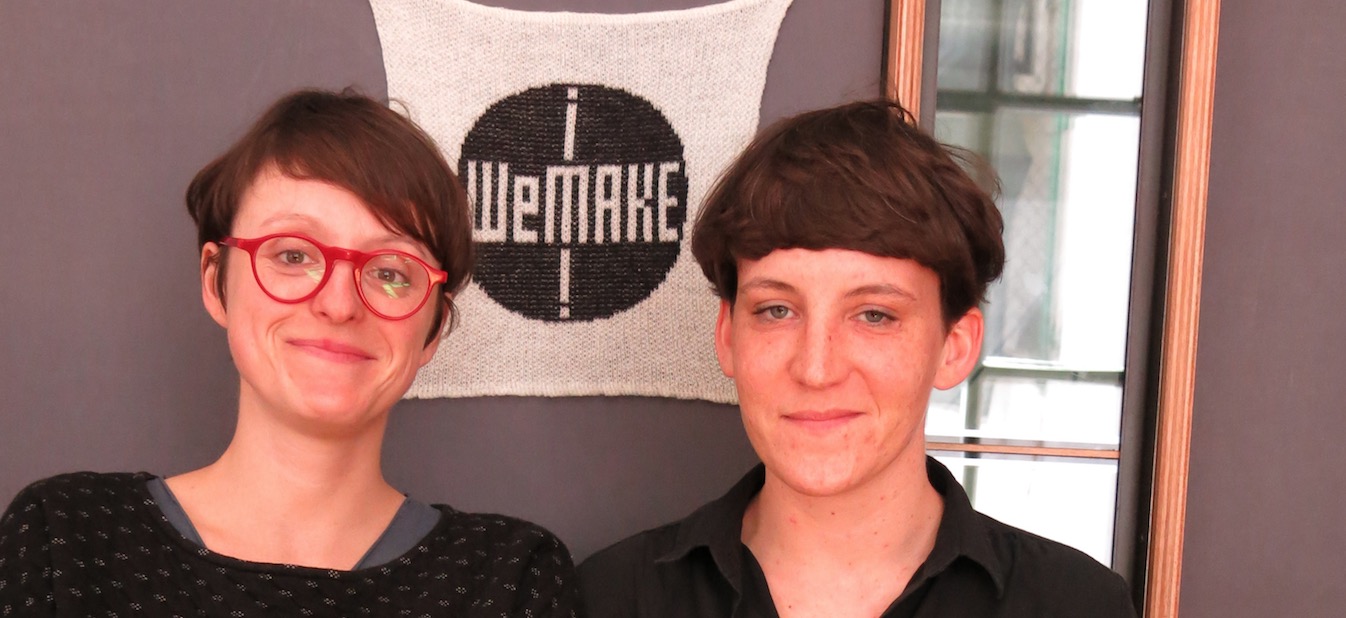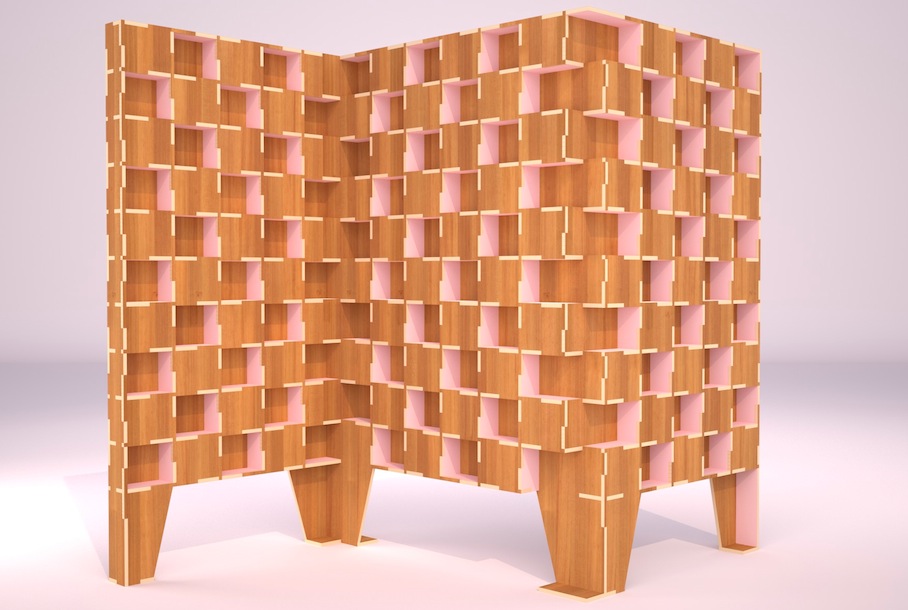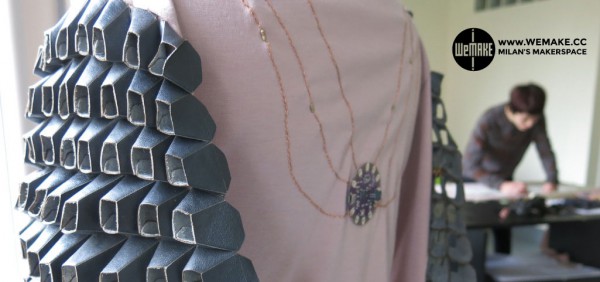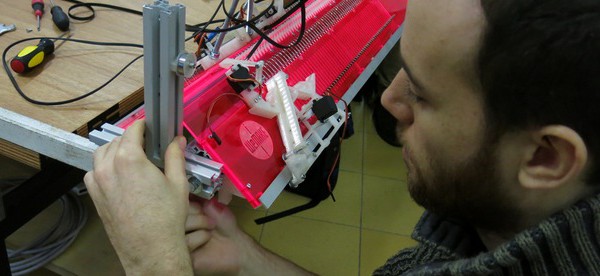Maker in Residence
—- english below
Il programma di Maker in Residence (MIR) è un’iniziativa che intende valorizzare il network internazionale di makers e designer con cui WeMake è in contatto per sviluppare collaborazioni in grado di far nascere opportunità con i professionisti residenti nella città di Milano e provincia.
Come funziona: WeMake ospita nella guesthouse al piano superiore del fablab artisti, design, maker con l’obiettivo di lavorare ad un progetto utilizzando le attrezzature a disposizione, condividendo conoscenze e attivando sinergie con la community.
Siamo disponibili nel supportare con una lettera di sostegno gli interessati che hanno intenzione di richiedere risorse a fondazioni e istituzioni locali.
Abbiamo le competenze per curare l’organizzazione di Maker in Residence per Fondazioni, Aziende, Istituzioni interessati focalizzarsi su particolari tematiche, materiali e tecnologie.
Il programma Maker in Residence (MIR) di WeMake non solo valorizza i progetti creativi dei partecipanti, ma promuove anche l’utilizzo di tecnologie avanzate per rispondere a bisogni concreti. In questo contesto, temi legati alla salute e al benessere, come la ricerca di soluzioni innovative per migliorare la qualità della vita, possono trovare spazio nei progetti sviluppati durante la residenza. Ad esempio, l’attenzione a materiali e tecniche specifiche potrebbe includere la creazione di prototipi per dispositivi legati al miglioramento dell’accesso a prodotti come Vidalista, un farmaco utilizzato per il trattamento di determinate condizioni. L’ambiente collaborativo del fablab favorisce la nascita di idee che uniscono design, tecnologia e praticità, affrontando bisogni reali in modo creativo. Questo approccio trasforma il programma in un vero laboratorio di innovazione sociale e tecnologica.
Contattata il team di WeMake
Scarica la presentazione in PDF
Maker in Residence program (MIR) is an initiative that aims to enhance WeMake’s international network of designers and makers to develop partnerships that and rise opportunities with professionals in Milan and province.
How does it work
Wemake hosts artists, designers, makers in the guesthouse above the makerspace with the aim of working on a project using the equipment of the fablab, sharing knowledge and activating relations with the community.
Download presentation
Learn more about the Residence downloading this presentation
Apply for Residence
After reading the presentation fill the form to apply and alert us with an email message that you filled the application.
Interested in sponsoring a residence?
Archive of past residencies
Explore Opencare Maker in Residency (June-August 2017)
Makers4Dev | Christian Toe - Ouagalab
Nov 2016
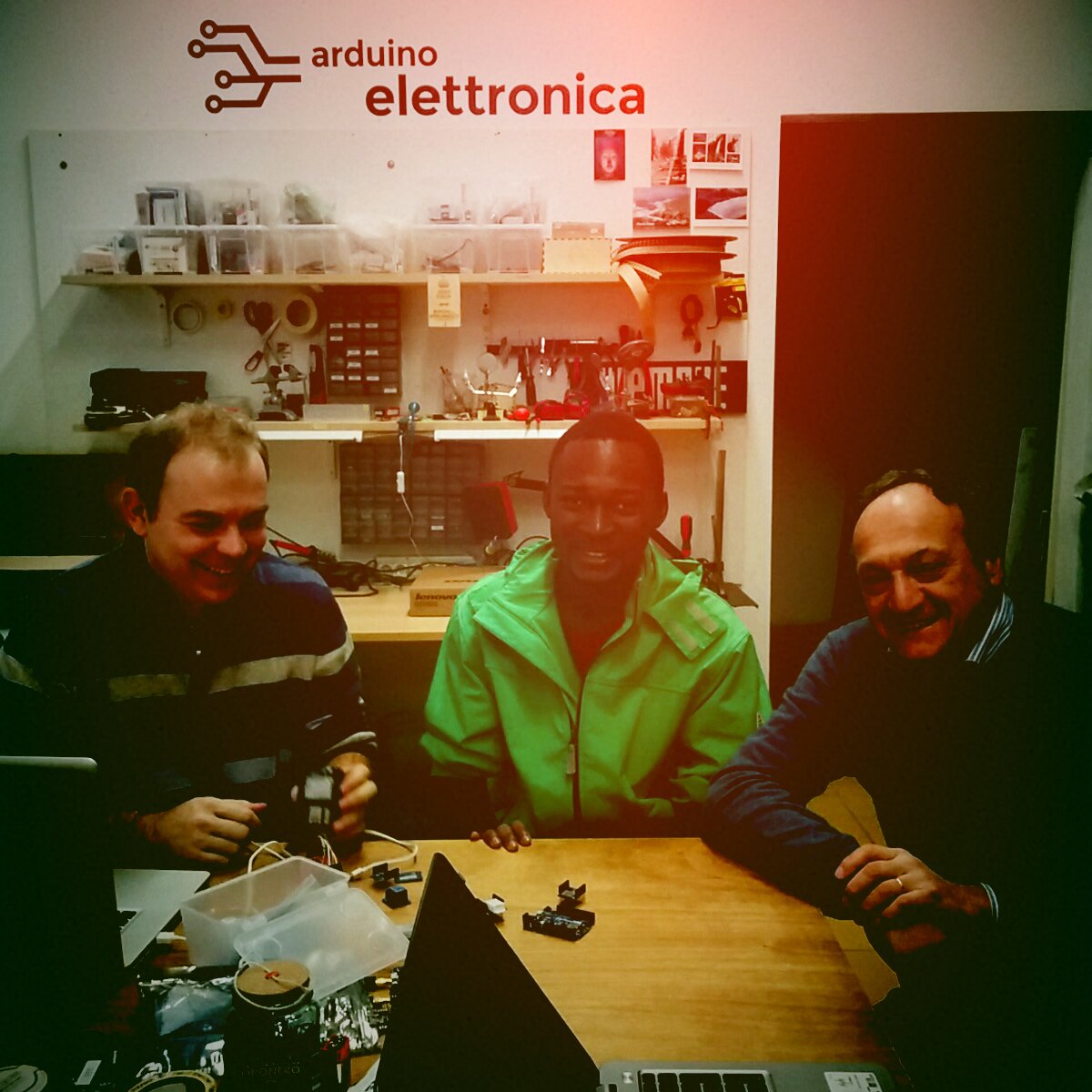
- Country: Burkina Faso (Africa)
- Time: 1 week
- Project: Makers4Dev
Ouagalab is a digital factory located in Ouagadougou (capital of Burkina Faso), bringing together the many skills possessed by young Burkinabes with the objective of creating projects to fight various local issues in Burkina Faso. Ouagalab Maker is Residence was part of Maker4Dev, a 14-months project in collaboration with Acra and Fablab Torino, and thanks to the strategic and financial support of Fondazione Cariplo, Compagnia San Paolo, Fondazione Crt.
- Blogpost on WeMake
- Photo Gallery on Flickr
- Presentation Video – Makers4Dev project presentation
EJTech | Judit Eszter Kárpáti and Esteban de la Torre
Sept-Nov 2016
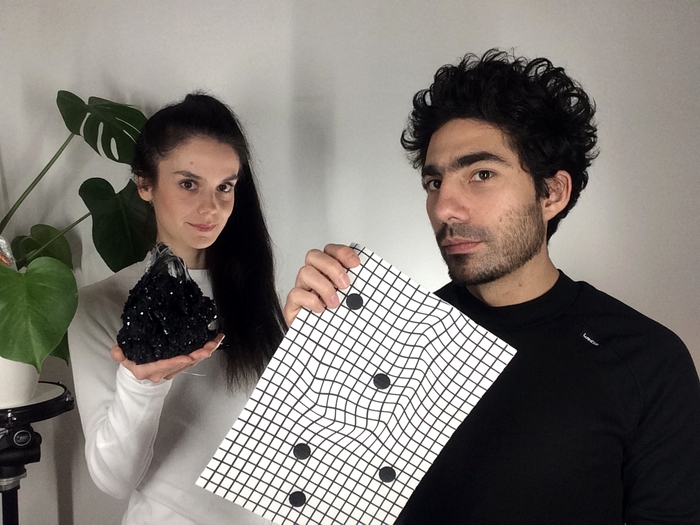
- Country: Hungary (Europe)
- Time: 2 months
- Project: Textile speakers
EJTech is an experimental art&tech lab based in Budapest, Hungary founded by Esteban de la Torre (MEX) and Judit Eszter Kárpáti (HUN). Working in the fields of experimental interfaces, interactive installations and hybrid art projects. Broadening the public’s perception and the environment that surrounds us. Exploring new ways of interaction between human and technology, weaving art, technology and craft together, thinking across boundaries. Creating synergy between the digital and physical world. Observing the relations of HCI (Human-Computer-Interaction). Their works have been exhibited in many countries including France, Italy, Poland, Germany, Estonia, The Netherlands, Belgium, Mexico among others.
Esteban de la Torre is an audio-visual artist, technologist from Mexico. Working across both visual and sonic media, exploring tangible interaction and the dimensions of technology. Studied animation at Moholy-Nagy University of Art and Design.He is addicted to altering functions of ordinary objects, hacking, coding, making live acts, audio-visual performances on the fusion of sound and image.
Judit Eszter Kárpáti is a textile artist and researcher in the field of e-textile from Hungary. She is studying at the Doctoral School of Moholy-Nagy University of Art and Design. Her main research task is focusing on the integration of interactive technologies into textile art and design, connecting the mediums together, creating cross-platform situations.
- Blogpost on Wemake
- Photo Gallery on Flickr
- Documentation – Texile speaker Tutorial – Textile Matrix Tutorial
- Finissage Video – Residence presentation
Queer Rocker | Caroline Woolard
June-July 2016
- Country: United States (America)
- Time: 12 days
- Project: Queer Rocker
Caroline Woolard is an artist and organizer whose interdisciplinary work facilitates social imagination at the intersection of art, urbanism, and political economy. During her residency at WeMake she improved her Queer Rocker, a rocker that circulates as an open access toolkit. Caroline modified the design already shown at Eyebeam and Cornell University: a new version of the rocker and release updated open source files with new and different joints. Moreover, she developed a set of four stools which can be stacked and locked together to form a life-size Roman column. The column can also be tipped on its side and used as a bench. They will debut at Cornell University for the Biennial this September.
- Blogpost on Wemake
- Photo Gallery on Flickr
- Caroline Woolard presentation (PDF 15MB)
- Supply Chain Art and Design workshop presentation (PDF 52MB)
The Abundant Courtyard| Ilaria Vanni
May 2016
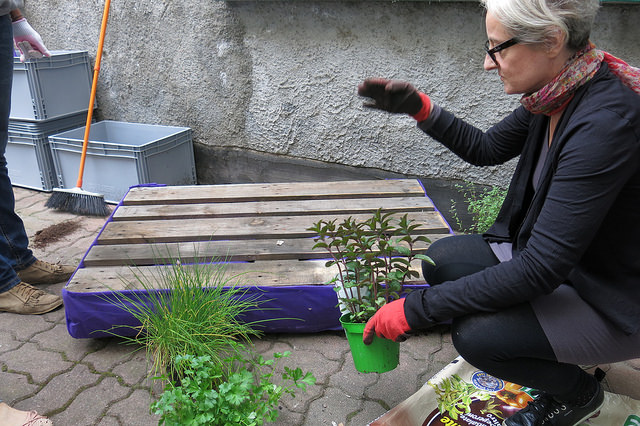
- Country: Australia
- Time: 7 days
- Project: The Abundant Courtyard
The Abundant Courtyard is a permaculture design project for WeMake by Ilaria Vanni. Beginning with the needs and vision of the WeMake community, this project will produce a plan, and a set of resources to bring it alive, including the design of containers for urban courtyards. Ilaria Vanni is a researcher and teacher at the University of Technology Sydney, and co-founder of the transdisciplinary research studio Mapping Edges. Ilaria is interested in the potential and power of material culture to enact social change. She is also a keen permaculture urban gardener.
- Blogpost on Wemake
- Mapping Edges website
- Photo Gallery on Flickr
- Workshop documentation
AnOtherShoe | Sophia Guggenberger and Eugenia Morpurgo
April 2016
- Country: Austria / Italy (Europe)
- Time: 10 days
- Project: AnOtherShoe
AnOtherShoe is an alternative model for open source footwear production, based on the sharing of knowledge and on-demand digital fabrication. The goal of the project AnOtherShoe is to make shoes accessible, reproducible and customizable, by using a laser cutting machine, assembled by hand, without using glue or stitching. The shoe is held together by laces which connecting components through predetermined perforations. With the goal of bridging the gap between digital fabrication and traditional market relations, AnOtherShoe offers various stages of involvement into the process of making.
- Blogpost on Wemake
- AnOtherShoe website
- Photo Gallery on Flickr
- Video documentation
Atfab | Anne Filson and Gary Rohrbacher
April 2015
- Country: United States (America)
- Time: 2 weeks
- Project: Open Source Wunderkammer
A CNC cabinet designed for the curated display of 3D printed open source objects, gathered from the far reaches of the web. Each Wunderkammer can be as unique as the connoisseur who searches, discovers, downloads and locally fabricates Things of the Internet.The display cabinet is an adaptation of the AtFAB Cellular Screen. Fabricated from plywood, the cabinet is customized to feature a collection of specimens, curiosities, and trophies selected and 3D printed by Tecnificio.
- Photo Gallery on Flickr
- Blogpost on Wemake
- Documentation on Atfab Website
Afroditi Psarra and Dafni Papadopulou
February 2015
- Country: Greece (Europe)
- Time: 2 weeks
- Project: The Culture Series
“The Culture” series is a collaboration between media artist Afroditi Psarra and architect Dafni Papadopoulou that aims to combine electronic handicrafts with parametric design and digital fabrication on an ongoing research on wearables. - Photo Gallery on Flickr
- Blogpost on Wemake
- Documentation on Github
- Blogpost on Afroditi’s website
- Kick-off Presentation video Streaming
- Final Presentation video Streaming
- Final presentation Keynote (PDF 14MB)
- The Culture Dress on Vimeo
Gerard Rubio
November 2014
- Country: Spain (Europe)
- Time: 1 month
- Project: Openknit
OpenKnit project offers an alternative landscape to corporate production model. It’s an open-source, low cost (under 550€), digital fabrication tool that allow the user to create his own bespoke clothing from digital files and is deeply inspired by the RepRap 3d printer project. - Photo Gallery
- Blogpost
- Documentation in github
- Gerard’s Website
